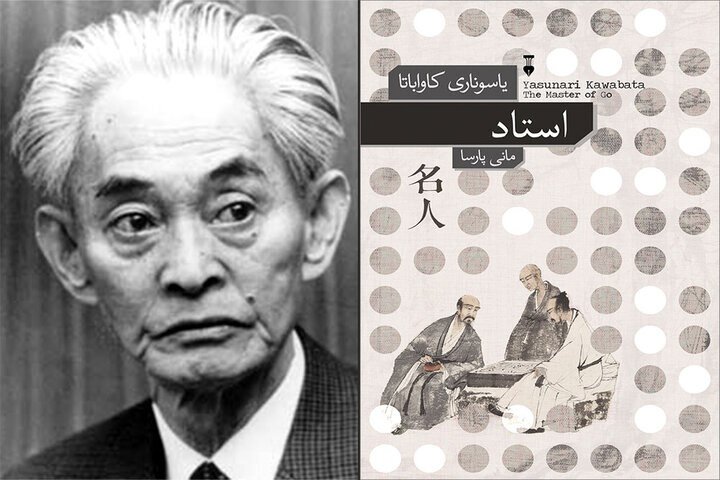Yasunari Kawabata’s “The Master of Go” published in Persian

TEHRAN-The novel “The Master of Go” written by the Nobel Prize winning Japanese author Yasunari Kawabata has been released in the Iranian book market.
Translated into Persian by Mani Parsa, the book has been published by Nashre Now publishing house, Mehr reported.
First published in serial form in 1951, Kawabata considered it his finest work. The story itself is a semi-fictionalized account of a lengthy 1938 Go game between the respected master Honinbo Shūsai and the up-and-coming player Minoru Kitani (known as Otaké in the book). The match took almost six months to complete, and was the last of Shūsai's career.
Go is a game of strategy in which two players attempt to surround each other's black or white stones. Simple in its fundamentals, infinitely complex in its execution, Go is an essential expression of the Japanese spirit. And in his fictional chronicle of a match played between a revered and heretofore invincible Master and a younger and more modern challenger, Kawabata captured the moment in which the immutable traditions of imperial Japan met the onslaught of the twentieth century.
The competition between the master of Go and his opponent, Otaké, is waged over several months and layered in ceremony. But beneath the game’s decorum lie tensions that consume not only the players themselves but their families and retainers—tensions that turn this particular contest into a duel that can only end in death. Luminous in its detail, both suspenseful and serene, “The Master of Go” is written with the poetic economy and psychological acumen.
In the novel, the game, as actually played in real life, lasts 237 moves, and is documented in the book by means of diagrams. Otaké (as his historical counterpart Kitani) wins by 5 points with the Black stones. Kawabata had reported on the match for the Mainichi newspaper chain, and some sections of the book are reworked versions of his original newspaper columns.
The novel follows the progress of the game as it moves from location to location, placing particular emphasis on the time between each player's moves (often a matter of days). As Meijin, Shūsai is entitled to certain deference which he does not always receive. Thus, the players regularly come into conflict with one another about the ritual and ceremonial aspect of the game. Finally, Shūsai dies from an illness, mirroring the death of the historical Shūsai just over a year after the end of his match.
Kawabata (1899–1972) was a Japanese novelist and short story writer whose spare, lyrical, subtly shaded prose works won him the Nobel Prize in Literature in 1968, the first Japanese author to receive the award. In awarding the prize “for his narrative mastery, which with great sensibility expresses the essence of the Japanese mind,” the Nobel Committee cited three of his novels, “Snow Country,” “Thousand Cranes,” and “The Old Capital”. His works have enjoyed broad international appeal and are still widely read.
Translated into more than a dozen other languages, the book remains one of the most popular and critically successful of Kawabata's novels. The novel has also served to increase the popularity of Go in the West, providing a description of the game which does not require already knowing the rules. It has been used by Western Go players as a starting point to explore the place of Go in Japanese society, and the book is commonly recommended to younger players.
SS/
